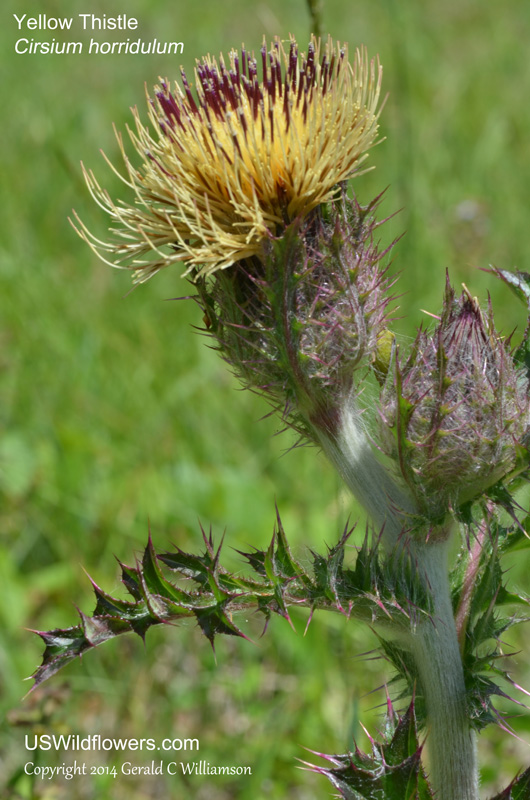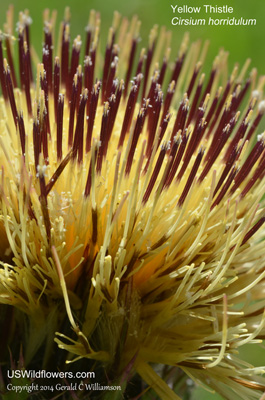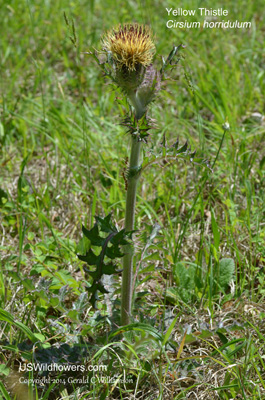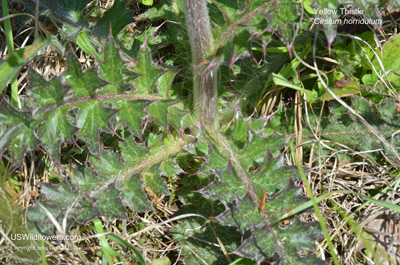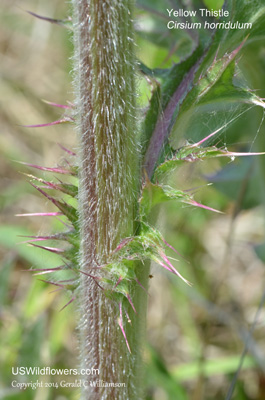Wildflowers of the United States | |||||||||||||
| |||||||||||||
Cirsium horridulum - Yellow Thistle, Common Yellow Thistle, Spiny Thistle, Bigspine Thistle, Southern Yellow Thistle, Horrible Thistle. Most of the plants we normally call thistles are within four genera in Asteraceae, Carduus, Cynara, Cirsium, and Onopordum. The vast majority of the species of thistle found in North America - and all the native ones - are in the Cirsium genus. With over 60 species in the genus in North America there is at least one in every state, and the genus is represented throughout most of Canada as well.
Cirsium horridulum, Yellow Thistle, is an eastern species, being found in all of the eastern coastal states from Maine to Texas as well as in Tennessee, Arkansas, and Oklahoma. It grows in open areas such as roadsides, meadows, and pastures. While Cirsium horridulum, along with all species of Cirsium, are considered noxious weeds in Arkansa, and many (most?) people look on it as such, it receives protection as an Endangered or Threatened species in Connecticut, New Hampshire, Pennsylvania, and Rhode Island. There are three varieties of the species in the United States - vars. horridulum, vittatum, and megacanthum. Var. horridulum is the only one with yellow flowers, but it can also have red to purple flowers. The other two varieties have a narrower distribution in the U.S., and are less hairy than var. horridulum.
| Found in: AL, AR, CT, DE, FL, GA, LA, MA, MD, ME, MS, NC, NH, NJ, NY, OK, PA, RI, SC, TN, TX, VA Leave comments on Cirsium horridulum at this link.  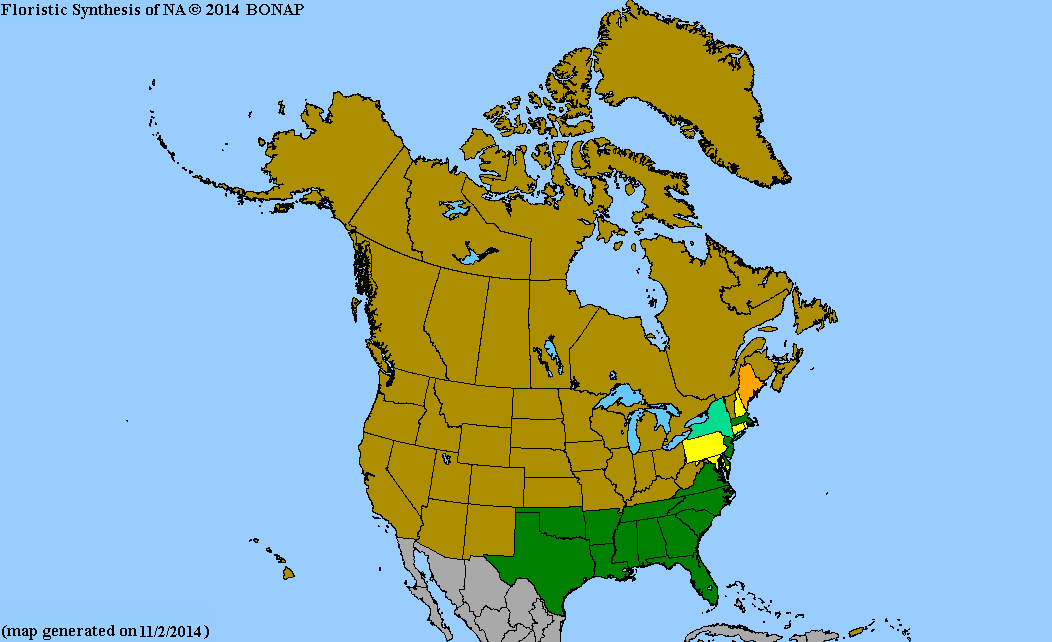 Map courtesy of The Biota of North America Program. Map color key Search Our Database: Enter any portion of the Scientific, Common Name, or both. Do a general Google search of the entire site: #ad #ad
| #ad
| | ||||||||||
|
Commercial / Cookie Notice Looking for Wildflowers for a specific state? Check here: | |||||||||||||
|
All content except USDA Plants Database map Copyright Gerald C. Williamson 2024 | |||||||||||||
Code Update 20230302

